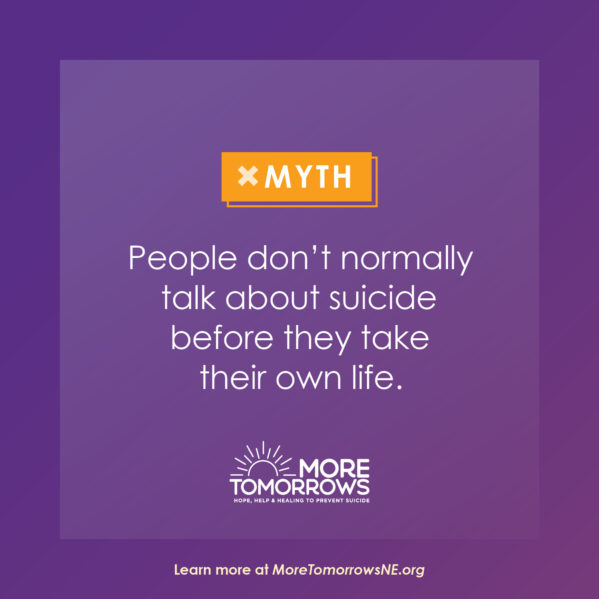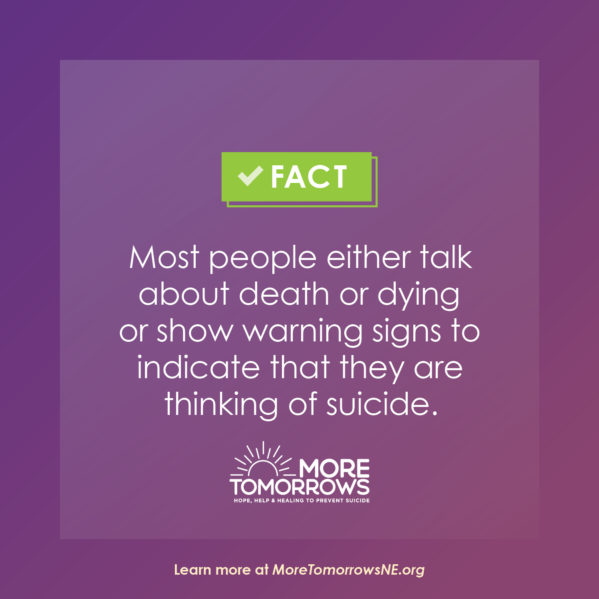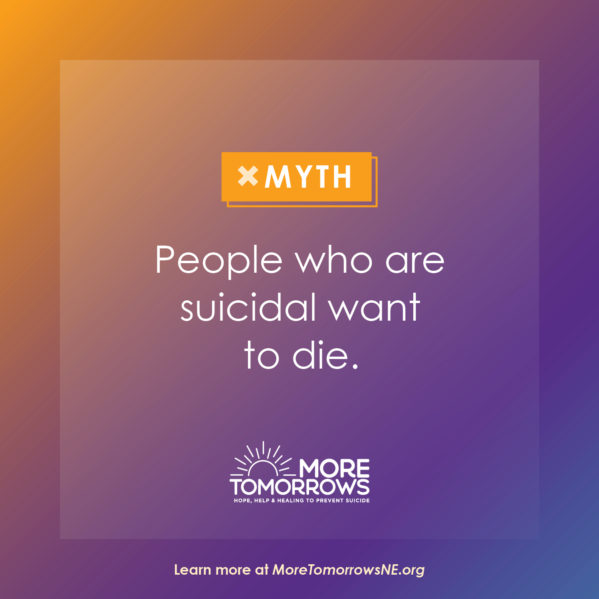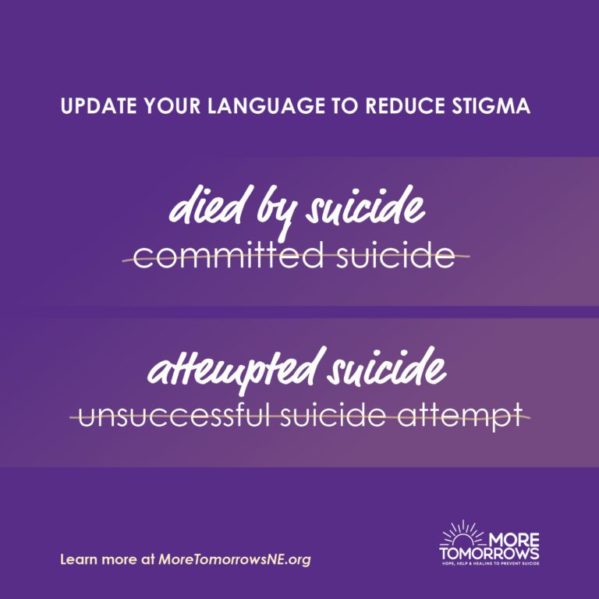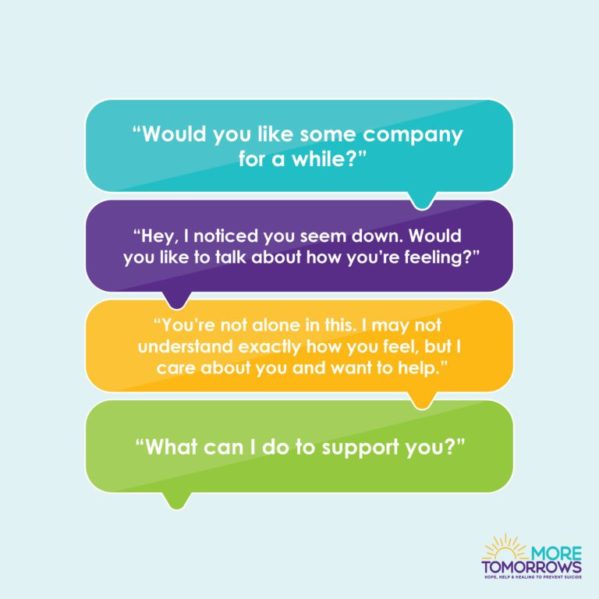Sample social media posts
Click to download any of the following images.
Get help now
CALL OR TEXT 988Post #1: Studies show that asking people if they are suicidal does not increase suicides or suicidal thoughts. In fact, offering an opportunity to talk about feelings may reduce the risk of acting on suicidal feelings. Learn how to approach the conversation at MoreTomorrowsNE.org.
Post #2: Most people either talk about death or dying or show warning signs to indicate that they are thinking of suicide. Learn some common phrases and warning signs at MoreTomorrowsNE.org.
Post #3: Many people who are suicidal don’t want to die, but they don’t see another way out of their pain. Learn what local and national resources are available to support you or a loved one at MoreTomorrowsNE.org.
Post #4: 988 is a free, confidential lifeline that anyone can call 24/7, whether you’re concerned about yourself or others. First you’ll hear a message saying that you have reached the 988 Suicide and Crisis Lifeline. The language defaults to English with the option to choose Spanish. You will then be asked if you’d like to connect to the veterans crisis line if you or the person you’re concerned about is a military veteran or a current service member. Past that point, your call will be routed to the nearest crisis center. A skilled, trained crisis counselor will listen to you and tell you about services that are available in your area. There is no risk in reaching out to this lifeline — please don’t hesitate to call.
Post #5: There’s something you can do right now to help save lives: update your language about suicide. “Committed suicide” implies a criminal act, and it may cause those who are feeling suicidal to believe that they will get in trouble if they reach out for help. Alternate phrases include “took their own life” or “died by suicide.” Also, avoid referring to an “unsuccessful” or “failed” suicide attempt. Instead, say “attempted suicide.” Never say “successful death” or “successful suicide.” Visit thekimfoundation.org/conversation-language-and-reporting for more tips.
Post #6: We may cross paths — either in person or online — with people who seem to be down. Here are a few conversation starters that may give them hope on a dark day. It’s important to listen without judgment and know what help is available if they disclose they’re struggling with depression or thoughts of suicide. Learn about local and national resources, in addition to the 988 lifeline, at MoreTomorrowsNE.org.
Post #8: A person experiencing a mental health crisis can’t always clearly communicate their thoughts, needs or emotions. It’s important to empathize and connect with the person’s feelings, stay calm and try to de-escalate the crisis. If you or the person is in immediate danger, don’t hesitate to call 911 and explain the situation.


